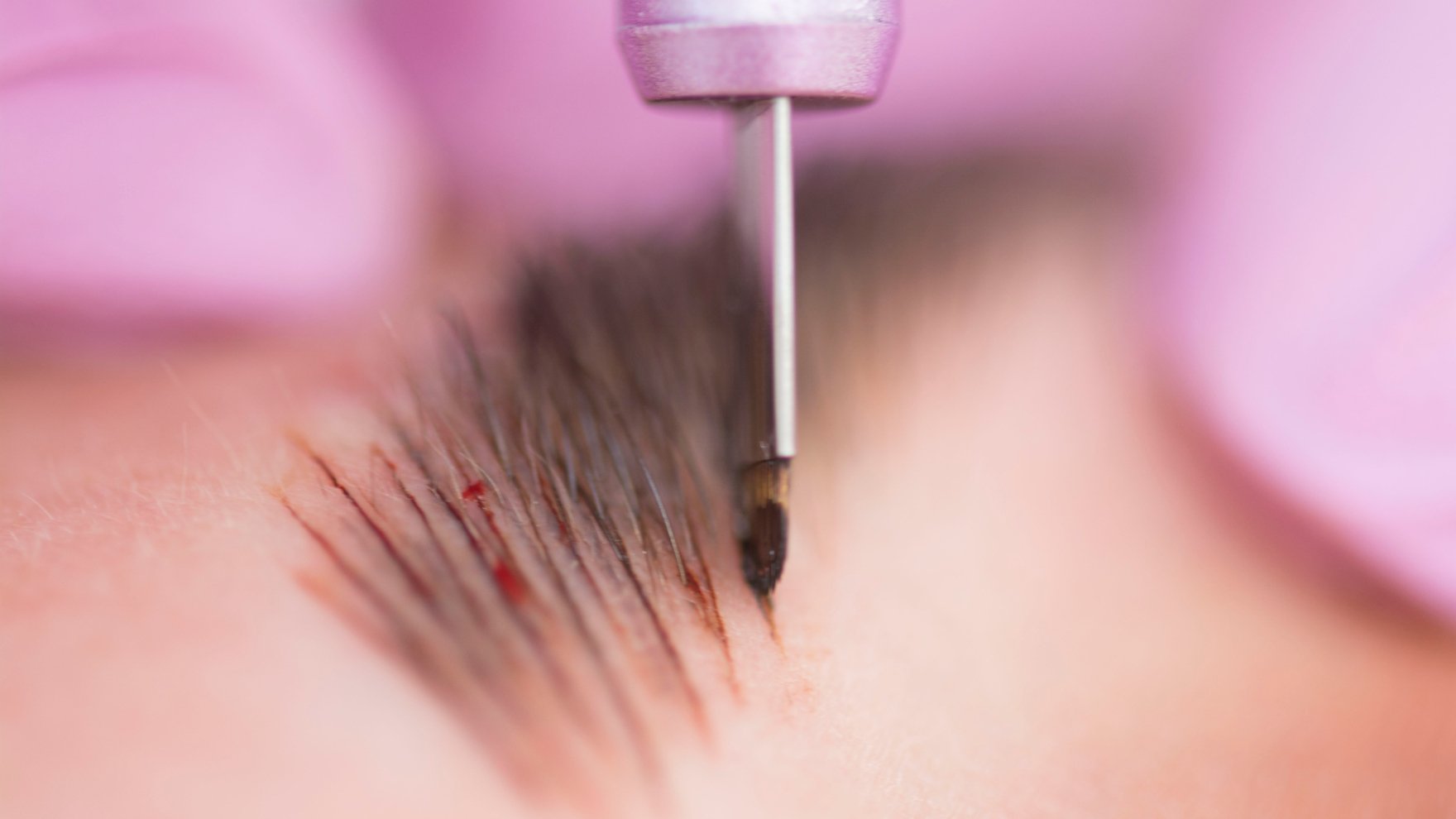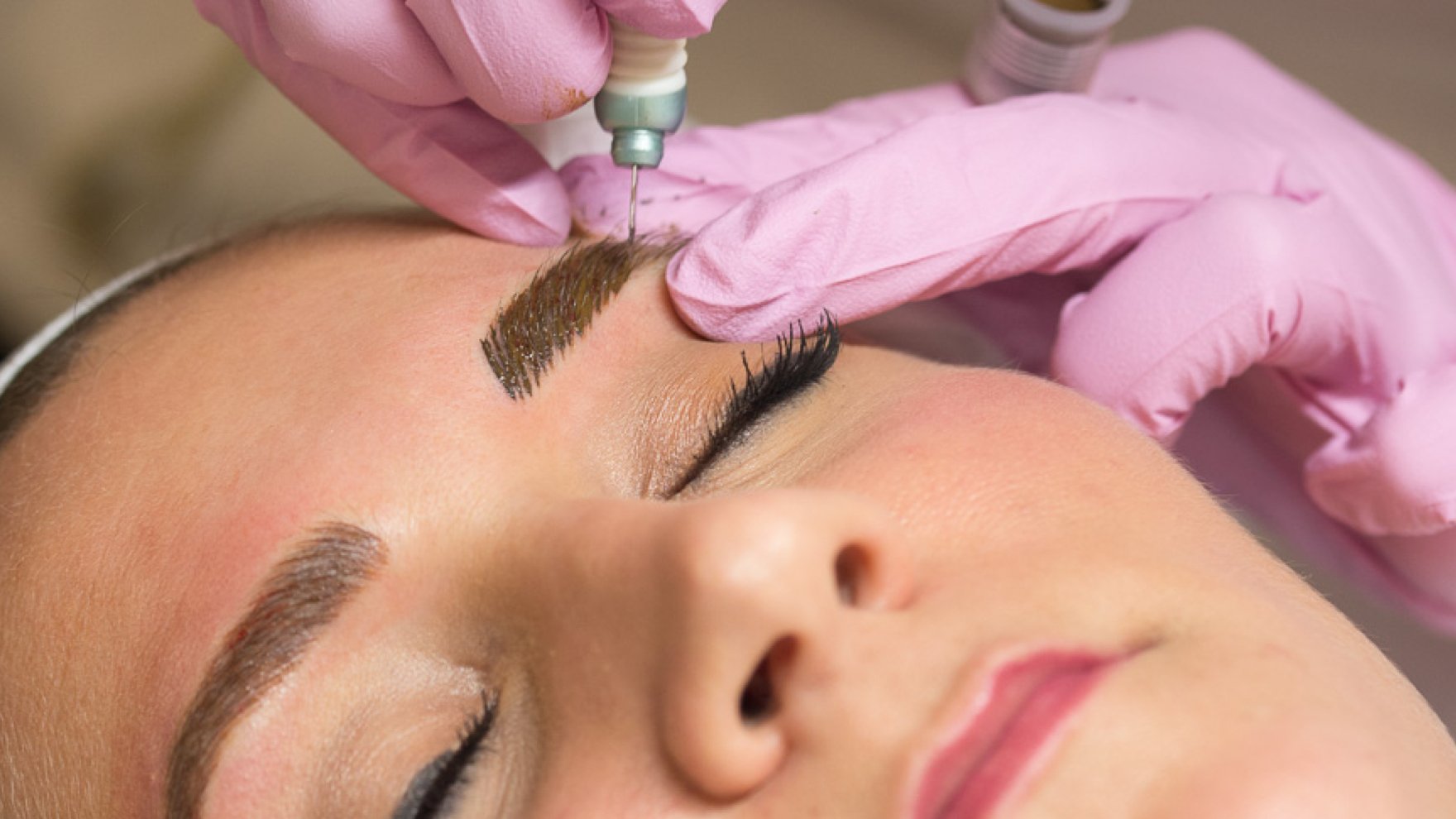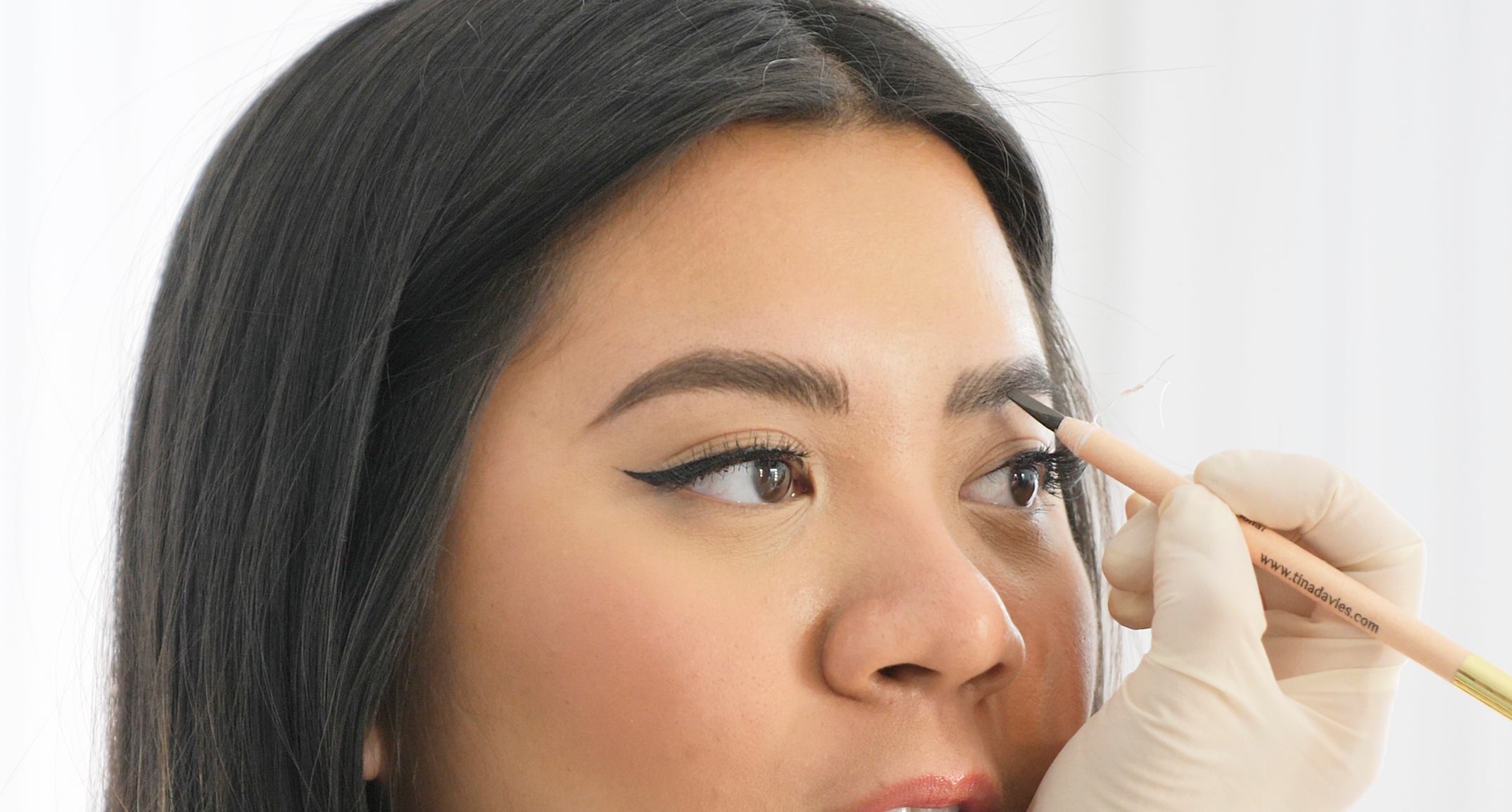
Bloodborne pathogens
Bloodborne Pathogens: What’s the Big Deal?
Being a professional in any field requires years of skill, studying, research, and training. Becoming a professional PMU and Microblading artist is no different.
As an artist, you need to be educated on all of the risks and various safety aspects that present themselves during a procedure. This includes the existence and possible transference of bloodborne pathogens.
With the recent surge of short and online PMU classes, it’s difficult to fully cover all of the health and safety hazards artists need to be aware of when dealing with this blood-related procedure.
In addition, much of the artist and client safety hazards can be taken for granted, especially when there is so much emphasis put on the practical part of microblading and PMU, such as patterns and technique.

What are bloodborne pathogens?
Bloodborne pathogens are tiny, microscopic organisms that live in the blood and can cause infectious diseases in humans. These diseases include hepatitis B and C, HIV, and a host of other diseases that can be transmitted by blood. If you are in any profession that involves using needles, working with skin, bodily fluids, or broken skin, you are at risk of coming into contact with blood that could possibly be infected.
Professionals who encounter these microorganisms in their daily lives are nurses, doctors, tattooists, piercers, dentists, home care providers, manicurists, aestheticians, and of course, permanent makeup and microblading artists. It is extremely important for people in these professions to know all of the risks that bloodborne pathogens present, as well as how to deal with a situation when a risk becomes a reality.
To make things even more challenging, these microorganisms are invisible to the naked eye. However, it’s important to know that where you see blood or broken skin, the possibility of encountering bloodborne pathogens is not only high, but extremely likely.
The Risks
The most common way to get an infection from a bloodborne pathogen is through contact with another person’s blood to the mucous membranes, or through an existing cut or wound. Harmful microorganisms can also settle under the beds of the fingernails.
Aside from being at risk of getting an infectious and potentially dangerous bloodborne disease, you are also at risk of passing it along to another person or client if you do not take the proper precautions. For example, if you don’t properly dispose of your microblades in a sharps container, there is a possibility that the remaining infectious organisms can make contact with you and your next client through a needle stick injury.

In any case such as this, you could be held legally responsible for not making sure that your clients are safe should they contract a bloodborne pathogen.
It’s interesting to note that HIV, one of the most commonly known bloodborne pathogen related infections, is highly unstable and can be killed easily by soap and water before it enters the bloodstream. More stable bloodborne pathogens such as Hepatitis A, can survive for 4 hours on unwashed hands, while Hepatitis B can remain stable and survive for up to 7 days in dried blood.
Where do I start?
Safety and best practices start with implementing good BBP standards into your workflow.
Some simple workplace controls you can implement right now are:
- Use sterile, one-time use, fully disposable tools
- Ensure your tools have a certificate of sterilization
- Use barrier wrap on anything you may touch during a procedure
- Have your sharps containers close by
- Make sure that disinfection cleaning agents are easily accessible
- Implement strict hand hygiene protocols.
- Use universal personal protective equipment including; gloves, masks, and gowns. A new set of this equipment needs to be used at each treatment and used accordingly.
Some other things to consider for good BBP standards in your workplace are:
- Obtain your baseline health assessment - artist need to be aware of their own base health status.
- Obtain all immunizations – Ensure immunizations (Hep A, B, tetanus) are up to date
- Obtain BBP training and follow up - complete an online or in-person BBP training course every year. There is a wide selection of online course and resources that your instructor can recommend. If possible, a live, in person course is best. For follow up, make your local health department your resource and health partner by having full workplace inspections annually and strictly following the tattooing and personal services guideline in your area.
The Red Cross offers online training for those who may be exposed to blood and body fluids during the performance of their work and who wish to gain a more thorough understanding of bloodborne pathogens, the prevention of occupational exposure, and exposure follow-up.
What is cross contamination?
Cross contamination is always a risk during your procedures when you are dealing with a client’s bodily fluids. This happens when you touch something after you have touched blood or lymph; any surface you touch may now hold those bloodborne pathogens.
Here’s an example: If you are working on a client and you want to take some pictures with your phone, but you don’t take off your gloves when you grab your phone, those bloodborne pathogens from your client are now on your phone. Then, say that you put your phone down and adjust your headlamp or lamp, the bloodborne pathogens will be passed on to that surface and are now dangerously close to your own face. After this, say you grab a couple of other pigments: you’ve just spread all of those bloodborne pathogens to other surfaces and have cross-contaminated ALL of them. See how easy it is?
As another example, a client can be touching her eyebrow while she is admiring the work you’ve done and then touch your mirror. The bloodborne pathogens have now spread to that mirror, which means that if nothing is done to sterilize the mirror and you have other clients handling it, there is a risk of spreading one client’s bloodborne pathogens to the next person who touches that mirror.

There are many ways to avoid cross-contamination. Many microblading artists take additional precautions during their procedures by using as many disposable tools and materials as possible to reduce the risk of improper cleaning. Aside from using disposable microblading tools, many artists prefer to use bed sheets that are entirely disposable (instead of just washable), barrier films to cover items they touch such as lamps, bottles, and trolleys, wear shower caps to keep their hair from falling into their faces, and face masks. All of this ensures an extra level of precaution.
Make sure when you’re in a procedure that if you have to touch something other than a disposable item, you only do so once you have removed your procedure gloves. Then, you may dispose of the gloves, don a new pair, and continue with the procedure. Changing your gloves only takes a few seconds and is a habit you must adhere to 100% of the time.
A good rule of thumb to develop is to keep only disposables on your workstation. This way, you don’t accidentally cross contaminate any items by touching something on your tray that isn’t disposable, such as your glasses, phone, pencils, pigment bottles, etc. Also, as a reminder, all of your needles MUST be disposed of in a sharps container.
For more excellent information on avoiding cross-contamination, visit the Center for Disease Control and Prevention website here.
Disinfecting
Ciara Ramsden, Owner of Flirt Cosmetics Studio and Brow Bar in Calgary, PMU artist, and registered Paramedic and Emergency Medical Services Educator says that the artist must make sure that they increase barrier protection on the skin, on top of wearing gloves, to help prevent cracks in the skin that can contribute to the spread of possible bloodborne pathogens. “Care for your own skin by using high-quality barrier cream after washing,” she says. “Make sure to avoid cracks and wounds caused by constant hand washing, hand sanitizers, and dry winter weather.”

Some other best practices when dealing with bloodborne pathogens are washing your hands often when gloves are removed, disinfecting all surfaces between each client with a hospital grade disinfectant such as Cavicide, cleaning reusable tools (such as tweezers) with hospital grade disinfectant before sterilizing them, and re-taking your bloodborne pathogen training on a yearly basis.
You must also be careful to disinfect your station PROPERLY, not just quickly. Some disinfectants to wipe your station require that they remain on the surfaces for longer than you may expect. Be sure to check the instructions on the bottle, as it the disinfectant may need to have contact on the surface anywhere from 30 seconds to 10 minutes.
BBP Training
Taking a course in bloodborne pathogens is absolutely crucial. A comprehensive course on bloodborne pathogens (such as the one in OSHA) will include the following subjects:
- Epidemiology and symptoms of diseases
- Modes of transmission
- Exposure control plan
- Exposure determination
- Various methods of exposure control
- Universal and standard precautions
- Engineering and work practice controls
- Decontamination and disposal
- Personal protective equipment
- Housekeeping
- Hepatitis B vaccination
- Procedures to follow in the event of an exposure incident
- Post-exposure evaluation and follow-up
- Hazard signs and warning labels
- Recordkeeping
Valerie Weber, permanent makeup artist for Dermagrafix in Pennsylvania, points out some common mistakes made amongst beginners when dealing with bloodborne pathogens.
“The most common mistakes I see new trainees make is taking advice from multiple technicians,” she says. “While it may be great to collect opinions and pick one that suits your style or preference, the information is often inaccurate. The advice may be coming from someone who is inexperienced, someone who practices below the professional standard or wasn’t taught well or coming from someone who practices in a different city, state, or country where the laws vary drastically. I think some people also need to tap into their common sense to discern what makes sense in terms of safety. Just because there isn’t a law to do something a certain way doesn’t mean that we shouldn’t try to uphold a better standard than what is required.”
As for training, Valerie says that beginners will more than likely have to work on finding a class outside of their microblading course for a proper education on bloodborne pathogens. “Most trainers are not qualified to offer bloodborne pathogens training, but a course is required in most cities,” she says, “Tattoo and permanent makeup practitioners must take an OSHA approved bloodborne pathogens course specific to body modifications. These classes are at minimum four hours, and a certificate of completion is given to prove that the student attended. This course would be renewed annually as well. It is wise for a student to take this class before taking any fundamental [microblading or PMU] training class.”
A lot of artists will display their BBP certificate in their work space and website to give their clients (and Health Inspector) some extra peace of mind. Make sure that you double check the legislation for your area, as it may be required for you to display it in your workspace.
Tina’s Pro Tips
Pro Tip #1:
To build good work habits practices for your business, you should make sure that your workstation is as sanitary as possible. It is important that each and every client contact should be treated exactly the same and one should ALWAYS suspect that pathogen may be present.
Our Tina Davies Sterile Kits include 16 of the most widely used disposable tray setup items.You can find out more about The Sterile Kit on our blog.
Tina Davies 16 Piece Disposable Sterile Kit
Pro tip #2: Tell clients that you are blood borne pathogen certified in your marketing. This is a great tool for building your business, as it will also make your clients feel more at ease!
For more information, and to get your certification online, visit the OSHA (The Occupational Safety and Health Association) here
Please Note: The purpose of this article is to bring awareness to the existence and transference of bloodborne pathogens in PMU and Microblading. This article is not a substitution for a Bloodborne Pathogen training course.



1 comment
Great article …. we must always remind ourself and for the safety of our clients great advise Tina 👍
Diane,
Brow Wow Microblading, Boca Raton, Fl
Diane J. Ramirez
Leave a comment
This site is protected by hCaptcha and the hCaptcha Privacy Policy and Terms of Service apply.